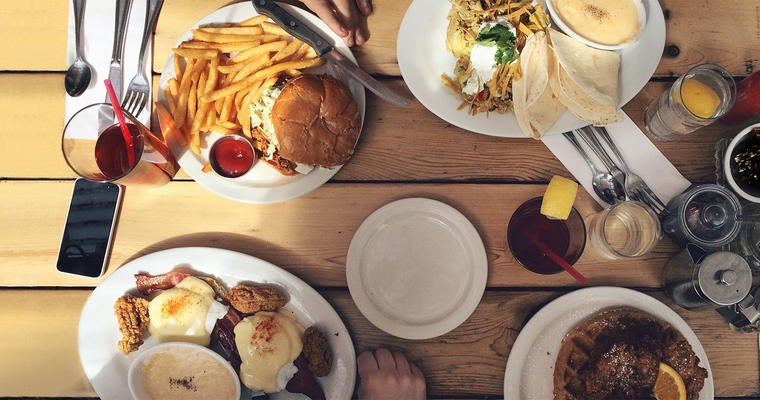All-day dining is addressing consumers’ need to eat what they want, when they want, but it’s not without its special challenges.
As business started to slow during the second half of 2016, a look for bright spots across the restaurant landscape revealed operators trying new ways to drive innovation. One innovation, emerging from major markets and spreading, is known as all-day dining, with operators blurring dayparts and accommodating diners throughout the day with ready access to the food they want when they want it. Sandwiches in the morning? Eggs and waffles at dinnertime? Why not—it’s a way to fuel customers with what they want and fuel sales growth simultaneously.
How all-day dining came to be
The conventional eating sequence of three meals with a snack or two is evolving. This is in response to how busy consumers have become. Fewer and fewer consumers have the time or desire to sit down and eat morning, noon and night. And they have even less time to socialize. These factors are pushing people to eat with whomever they can, whenever and wherever they can. The result is that dining out is shifting from an eating experience to a social event, and restaurant operators should consider making adjustments if they want to keep up.
The opportunities with all-day dining
The biggest perk to offering an all-day dining menu is increased guest counts and more aggregate sales. By offering breakfast throughout the day, modified snacks and scaled dinners, consumers get a breadth of options at compelling price points. You can employ an all-day menu with fewer overall items, mixing and matching them to offer more variety and attract customers from open to close. Those diners will likely be able to find a menu item they like at any time of day, making the decision to choose your operation a simple one that pleases the whole group. And for those picky eaters in the posse, having menu items available all day makes meal modifications easier for the kitchen because there are fewer items to juggle.
All-day dining also deals up another operational positive: the opportunity to reduce portion sizes in favour of shared plates. Shareables encourage socialization while allowing you to reduce inventory, decrease labour, improve profitability and refine your menu to give your customers the flavours they want.
The challenges of all-day dining
There’s no question that all-day dining can reduce check averages. Since most consumers are looking to control their spending, the less-expensive breakfast and snack items will likely meet their needs. That means they probably won’t be ordering the plentiful pasta dish or beef tenderloin from the dinner menu. To offset smaller check averages, focus on driving repeat visits. Also consider how shared plates encourage multiple purchases. People enjoy variety, so one sharing plate often leads to others. Suddenly, the check total is equal to (or beyond) where it would have been with entrée orders—and sharables are often more profitable than entrées. This satisfies the desire for a broader selection in a way that appeals to thrift-minded customers and leads to higher check averages.
Before moving to an all-day menu, an operator needs to vet the impact such a change will have their business. The goal is not to offer every item from every daypart, but to menu a selection of items that:
- Emphasizes an operation’s brand position within their market, ensuring they are unique and distinguishable from their competition.
- Can be perfectly executed every time to meet customers’ expectations and uphold their brand position.
- Reduces overall inventory and increases inventory turns due to a more manageable menu size and better cross-utilization of ingredients.
- Reduces your labour spend by diminishing prep time, time spent switching between dayparts and decreasing the number of items to execute overall.
- Increases execution speed. A reduced menu will free up time to focus on perfecting what remains and lead to less errors and send-backs.
Ultimately, an all-day dining menu, when well thought out and aligned to your brand, will help an operator meet consumers’ changing needs. The key to making it work is finding that sweet spot between profitability and operational impact.

























